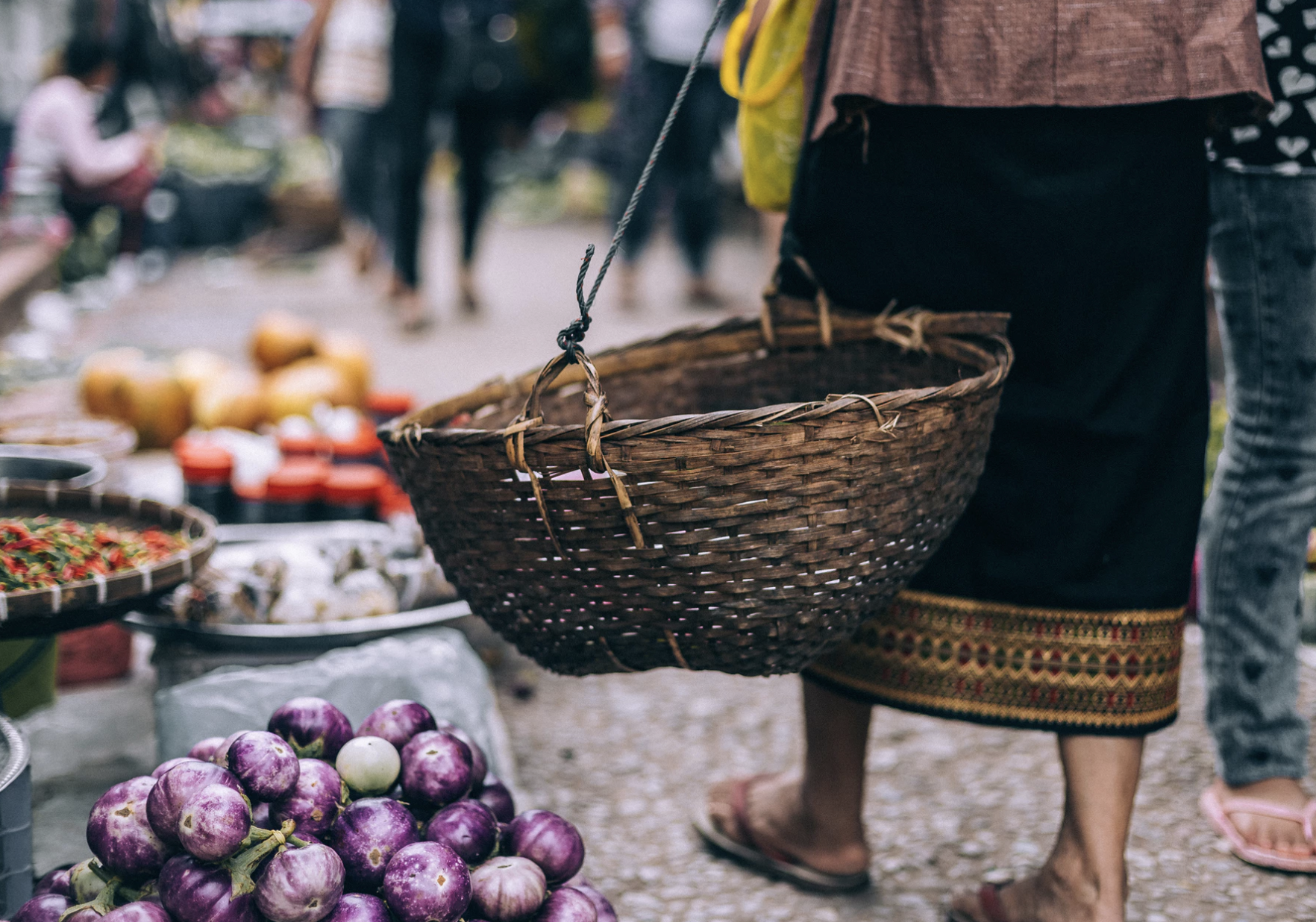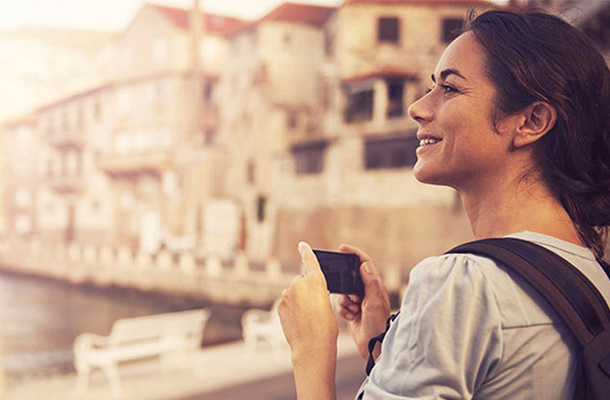6 Tips for Shopping Sustainably Around the World
One of the easiest ways to travel more responsibly is to shop more responsibly.
 Photo © Peter Hershey
Photo © Peter Hershey
Traveling more sustainably was one of the main aims of our year-long grand tour of the world we called Grantourismo, an experiment in slow travel, local travel, experiential travel, and ‘giving back’, which we undertook with the support of HomeAwayUK.
Our starting point was ‘slow travel’ and spending longer in places (two weeks in each destination) rather than flitting through in a few days – which is why it made sense to swap hotel rooms for holiday rentals. Holiday rentals are often second homes rented when owners aren’t using them or dedicated properties set up for travelers who like settling in for a while. Generally located out of tourist zones in everyday neighborhoods, they give people more opportunities to travel in a more eco-friendly manner by consuming less energy, recycling waste, and contributing more to local businesses.
How and where we spent our money was our next focus. Food, music, fashion, arts, crafts, and design all provide ways into understanding a culture and getting beneath the skin of a place. In each place we stayed we learned something about the local cuisine, shopped the local markets, and cooked ‘at home’. We weren’t going to travel the world for a year without buying mementos or replacing some clothes. And as we’re both passionate about art, crafts, design, and music, we acquired a little of each along the way. Over the course of the year we adopted the following rules that we now make it a habit to travel – and shop – by!
- Buy Ethically
- Support Fair Trade
- Go Organic & Eco-Friendly
- Buy Local and Buy Direct
- Keep Traditions Alive
- Choose Vintage Over New
1. Buy ethically
Few travelers, especially female ones, leave the French capital without taking away some home-grown fashion. In Paris, we stayed in an apartment on the lower slopes of Montmartre, where I met Christelle Bonnivard in her chic boutique Mademoiselle Bambû. After being inspired by the beautiful clothes she saw at an Ethical Fashion Show, Christelle gave up an advertising career to open her shop where she only sells ‘ethical fashion’ – clothes, jewelry and accessories made by small independent designers who only use materials whose origins they know. “The products must respect the environment, respect human beings, and be 100 per cent biologique (organic),” Christelle told me. “In France, we have a strict certification and standards system – the tags should say where the product was made, what it’s made from, and whether it is organic cotton or 100 per cent biologique.”
TIP: To ensure you’re buying things that are ethically made, read the information on the labels and tags.
2. Support fair trade
‘Fair Trade’ goods are ethically made products that come with more guarantees. In Bali, we could have bought souvenirs at the myriad markets, but we had no idea where they came from, whether child labor was used, and whether workers who made them were fairly treated. Instead, we went to Fair Trade shop Threads of Life in Ubud, which sells handmade textiles and handicrafts. Fairtrade products are produced and sold according to World Fair Trade Organization principles that require that education, training and employment opportunities be provided, people be paid fairly, and production be environmentally sustainable. Threads of Life works with traditional weavers in villages too remote to benefit from tourism, helping to train them, feed their families, educate their kids, maintain their traditions, and enable their communities to prosper and grow. So by shopping at Fair Trade businesses we’re helping too.
TIP: Look for stickers on shop windows and certificates on walls confirming Fair Trade status.
3. Go organic and eco-friendly
In every place we stayed we sought out farmers markets and ‘green’ markets for local, seasonal, organic produce, which leaves a smaller footprint than imported products that have been flown in or traveled some distance. For souvenirs and gifts, I tried to go beyond the usual recycled paper and soaps. For instance, in Venice’s touristy Rialto, steps away from stalls selling Chinese-made trinkets, I discovered Pied à Terre selling colourful brocade, silk and velvet slippers, inspired by those that peasant farmers who couldn’t afford leather shoes once made from recycled rags, jute seed bags and bicycle tires; desperately poor, they went to Venice to sell their soft-soled shoes to gondoliers. Pied à Terre makes their version using recycled tires and fabrics. In Venice, I also found Dietro Langolo, owned by architects Federica Serena and Sylvia Saltarin, which sells eco-friendly fashion, accessories and design objects created from recycled materials, including silicon, electric cable, fire hoses, and candy wrappers!
TIP: Look beyond the supermarket and souvenir shops for organic produce at farmers markets and interesting eco-friendly stores for special mementoes.
4. Buy local and direct
In San Miguel de Allende, I found stylish Ave María, specializing in cool, quirky, kitsch Mexicana, owned by local girl Giovanna Canela Miranda. Everything, from the t-shirts and handbags to art and interior design objects are ‘hecho en Mexico’ or ‘made in Mexico’. Giovanna proudly told me she designed many of the things herself which she commissioned Mexican artists to make, or she traveled around Mexico sourcing things directly from Mexican designers and artisans. In a town like San Miguel, which has a large expat population and many foreign-owned businesses, buying local is essential. By buying locally made products from local business owners, you know what you’re buying, you’re supporting local designers, craftsmen and artists; and you’re helping create demand for local products in a climate increasingly favoring cheap, mass-produced trinkets from China – yes, even in Mexico! Locals also re-invest profits into their community, whereas foreign business owners tend to send it ‘home’, so you’re helping ensure places have a distinctive local character, the kind of character shaped by quirky one-of-a-kind shops like Ave María.
TIP: Don’t be afraid to ask staff who owns the shop and where their products come from.
5. Keep traditions alive
In Céret, at the foot of the French Pyrénées, we noticed colorful stripes brightening everything from shop-fronts to feet (espadrilles!). Similar to British designer Paul Smith’s trademark lines, the distinctive candy-stripes are of Catalan origin, famously starring on Les Toiles Du Soleil, or The Cloth of the Sun, produced at nearby Saint Laurent de Cerdans for some 150 years. Once, the entire village was devoted to the textile’s creation by traditional techniques, but as machine manufacturing expanded business declined. Fortunately there’s been a resurgence of interest in the fabric thanks to three designers working under the umbrella ‘Made in Céret’ : Raphaelle Reixach makes charming Catalan sailor jackets, Jerome Perez decorates lamps and upholsters furniture, while Coralie Scarnato creates sunhats, bags, placemats, napkins, and table runners on a sewing machine in her shop. What makes Les Toiles Du Soleil special, Coralie told me, is its strength and durability due to it being tightly woven on old looms, and it’s fade-proof thanks to a traditional dying process. I left with some colorful placements, knowing not only did I have a uniquely Catalan souvenir, I contributed to the revival of a traditional craft.
TIP: Wherever you are, seek out traditional crafts or contemporary applications of traditional techniques; ask questions.
6. Choose vintage over new
As we traveled the globe, I spotted vintage shops springing up everywhere, from Buenos Aires to Berlin. For fashionistas, buying vintage clothes is about creating an individual style statement from rare old pieces unlikely to be seen on anyone else. Vintage is increasingly hip and the charity shops around the world that have de-cluttered their spaces and dusted their shelves in cities like Edinburgh reflects this. There, Barbara Williams, manager of Save the Children’s Mary’s Living and Giving Shop, told me how after a stylish revamp by celebrity retail-makeover guru Mary Portus, the shop is crowded with customers daily, as are others in Edinburgh. I love buying clothes as souvenirs so whenever I wear them I’m reminded of the place I discovered them. But what I love about buying vintage when I travel is that if it was rare in the place I bought it, it’s highly unlikely I’m going to see anyone wearing it elsewhere. But more importantly, I’m recycling something old, which is far better than buying disposable fashion.
TIP: Ask locals to point you toward charity shops; vintage stores are found in hip neighborhoods rather than tourist areas.
About the Author
Travel writer Lara Dunston and her photographer husband Terence Carter have authored and updated some 40 guide books and had hundreds of travel articles published on websites and in magazines and newspapers around the world, from National Geographic Traveler to Wanderlust. They recently completed a year of sustainable travel, sponsored by HomeAwayUK, which they chronicled on their blog Grantourismo.
Related articles
Simple and flexible travel insurance
You can buy at home or while traveling, and claim online from anywhere in the world. With 150+ adventure activities covered and 24/7 emergency assistance.
Get a quote

No Comments